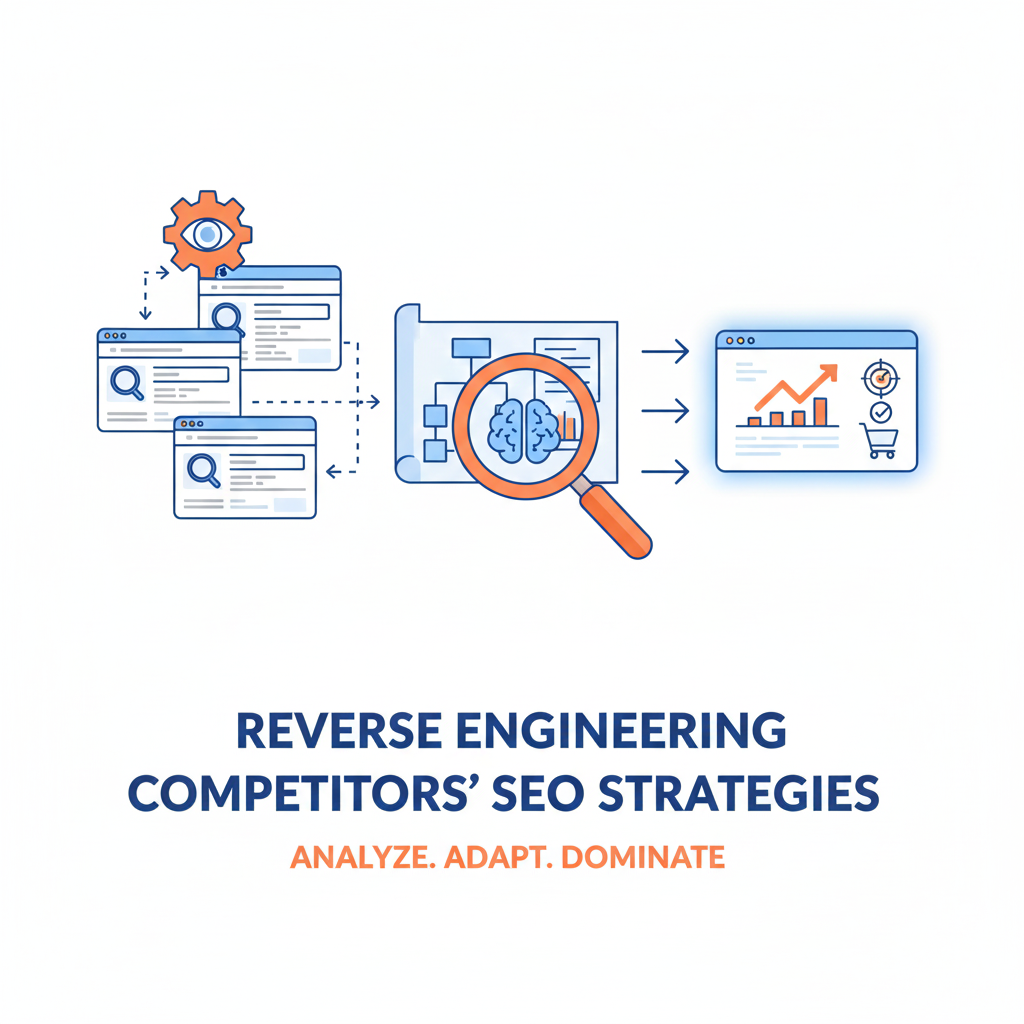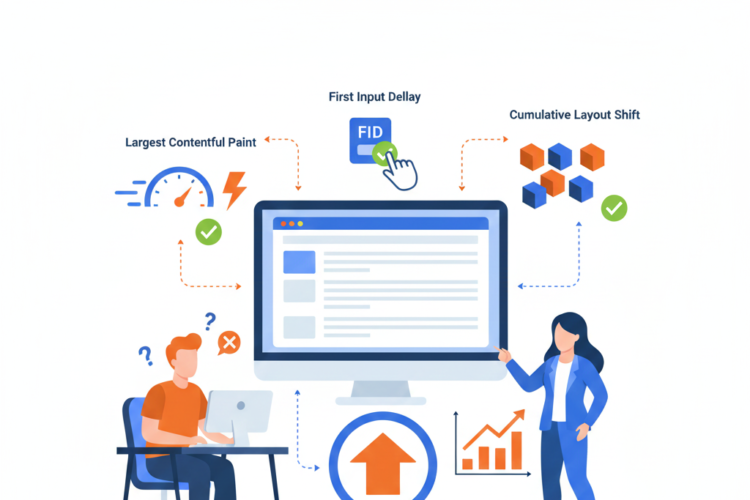
Reverse Engineering Competitors’ SEO Strategies: A Step-by-Step Blueprint for Gaining a Competitive Edge
Table of Contents
Introduction
Why Reverse Engineering Competitor SEO Is Critical
Step 1: Identify the Right Competitors
Step 2: Conduct a High-Level Competitive Audit
Step 3: Analyze Competitors’ Keyword Strategies
Step 4: Dissect On-Page SEO Elements
Step 5: Examine Content Strategy and Performance
Step 6: Evaluate Backlink Profiles and Link-Building Tactics
Step 7: Assess Technical SEO Health and Architecture
Step 8: Investigate UX, CRO, and Site Engagement Metrics
Step 9: Track Local SEO & Map Pack Rankings (If Applicable)
Step 10: Monitor SERP Features and CTR Optimization
Step 11: Build Your Actionable SEO Strategy from Insights
Tools for Reverse Engineering Competitor SEO
Ethical Considerations
Final Thoughts
1. Introduction
In the ever-evolving digital landscape, SEO is a zero-sum game—every ranking gained is one your competitor loses. One of the most strategic ways to outperform rivals is to reverse engineer their SEO efforts, understand what’s working, and use that insight to craft a superior SEO strategy.
This article dives deep into how to dissect and leverage your competitors’ SEO tactics to boost your own rankings, organic traffic, and conversions.
2. Why Reverse Engineering Competitor SEO Is Critical
a. Shortens Learning Curve
Rather than starting from scratch, learn what’s working for top players in your niche.
b. Validates or Refutes Your SEO Strategy
Compare your assumptions with real competitor data to realign your content, links, and keywords.
c. Identifies Gaps and Opportunities
Uncover missed keywords, underutilized content formats, and backlink sources.
d. Improves Forecasting Accuracy
Knowing your competitors’ strengths/weaknesses helps model your SEO performance projections more precisely.
3. Step 1: Identify the Right Competitors
Not every business in your space is a direct SEO competitor.
a. Types of Competitors:
Business Competitors: Offer similar products/services.
Search Competitors: Compete for the same keywords, even if offerings differ.
Content Competitors: Rank with informational content in your niche.
b. Tools to Identify SEO Competitors:
SEMrush: Use “Organic Research” > Competitors
Ahrefs: “Competing Domains” in Site Explorer
Google: Search your target keywords and list top-ranking domains
Tip: Focus on actual SERP competitors, not just your known business rivals.
4. Step 2: Conduct a High-Level Competitive Audit
Before diving deep, gain a bird’s-eye view of your competitor’s SEO health.
Key Metrics to Benchmark:
Domain Authority (Moz), Domain Rating (Ahrefs)
Organic traffic volume (monthly/yearly)
Number of ranking keywords (top 3, top 10, etc.)
Referring domains
Indexed pages
Site structure depth
Toolstack: Ahrefs, SEMrush, Moz, SimilarWeb, Screaming Frog
5. Step 3: Analyze Competitors’ Keyword Strategies
This step reveals their search intent targets and keyword clusters.
a. Collect Ranking Keywords
Use Ahrefs/SEMrush to pull:
Top-performing pages
Keyword positions
Volume, KD (keyword difficulty), CPC, SERP features
b. Group by Intent
Categorize keywords into:
Informational (blogs, guides)
Navigational (brand name searches)
Transactional (buy, pricing, service keywords)
Local (near me, city-based)
c. Identify Keyword Gaps
Use tools like Ahrefs “Content Gap” to find:
Keywords your competitors rank for but you don’t
Low-hanging fruit opportunities
6. Step 4: Dissect On-Page SEO Elements
Understand how competitors are optimizing their individual pages.
Analyze:
Meta Titles & Descriptions: Length, use of modifiers, emotional triggers, keyword placement
URL Structure: Clean, keyword-rich, hierarchical?
Header Tags (H1-H6): Use of structured, semantic headings
Content Layout: Length, formatting, table of contents, use of multimedia
Internal Linking: Anchor text distribution, cluster strategy
Schema Markup: Product, Article, FAQ, Breadcrumb schemas
Use tools like:
Screaming Frog SEO Spider
Detailed SEO Extension
Google Structured Data Testing Tool
7. Step 5: Examine Content Strategy and Performance
Your content strategy is the heart of your SEO strategy.
a. Content Depth & Frequency
Long-form vs short-form?
Update frequency and recency?
Evergreen vs seasonal?
b. Content Types
Blogs, comparison pages, how-to guides, product pages, FAQs?
Are they leveraging interactive or video content?
c. Top Performing Pages
Use SEMrush or Ahrefs to find:
Which blog/content pages bring the most traffic
Which keywords they rank for
Tip: Reverse engineer their topic clusters and map your own content accordingly.
8. Step 6: Evaluate Backlink Profiles and Link-Building Tactics
Links remain a dominant ranking factor. Learn what’s working for your competitors.
a. Referring Domains Analysis
Total vs dofollow vs nofollow
DR/DA of linking domains
Industry relevance
b. Anchor Text Diversity
Branded, keyword-rich, generic?
Over-optimized or natural?
c. Link Acquisition Tactics
Are links from guest posts, directories, HARO, PR, sponsorships?
Tools:
Ahrefs “Backlink Profile”
SEMrush “Backlink Analytics”
LinkMiner, Majestic
9. Step 7: Assess Technical SEO Health and Architecture
Even great content won’t rank with poor technical foundations.
a. Crawlability & Indexing
Robots.txt settings
XML sitemap presence
Crawl depth and orphan pages
b. Site Speed & Core Web Vitals
Largest Contentful Paint (LCP)
Total Blocking Time (TBT)
Cumulative Layout Shift (CLS)
c. Mobile Friendliness
Use Google’s Mobile-Friendly Test and PageSpeed Insights.
d. URL Architecture
Is it flat or deep?
Category/subcategory use
Use Screaming Frog or Sitebulb to conduct full audits.
10. Step 8: Investigate UX, CRO, and Engagement Metrics
SEO now overlaps with user experience.
Analyze:
Bounce rates, time on site, pages/session (via SimilarWeb or UX tools)
CTA placements and clarity
Page layout and mobile responsiveness
Visual hierarchy and trust signals (reviews, badges, certifications)
Great SEO also converts—understand how they guide users down the funnel.
11. Step 9: Track Local SEO & Map Pack Rankings (If Applicable)
If your competitor is local or multi-location:
a. Google Business Profiles (GBP)
Optimization of name, category, hours, photos
Review count, ratings, and response time
b. Local Citations
Are they using directories like Yelp, Yellow Pages, etc.?
c. NAP Consistency
Name, Address, Phone matches across platforms?
Use BrightLocal or Whitespark for tracking local competitors.
12. Step 10: Monitor SERP Features and CTR Optimization
Competitors often leverage SERP features to dominate visibility.
Check for:
Featured snippets
People Also Ask boxes
Video thumbnails
Image packs
Top stories
Rich snippets from schema
Tip: Use Ahrefs “SERP Features” filter to spot high-impact opportunities.
13. Step 11: Build Your Actionable SEO Strategy from Insights
Now synthesize all data into your own strategy.
a. Keyword Strategy
Attack high-volume + low-competition gaps
Prioritize based on business goals (traffic vs leads vs revenue)
b. Content Roadmap
Replicate top-performing content
Improve it (skyscraper method)
Add content your competitors missed
c. Link-Building Plan
Target the same referring domains
Use similar anchor strategies
Pitch with stronger value propositions
d. Technical Fixes
Ensure your site is faster, more crawlable, and mobile-friendly
e. UX Enhancements
A/B test landing pages, improve CTAs, optimize for conversions
14. Tools for Reverse Engineering Competitor SEO
| Tool | Use Case |
|---|---|
| Ahrefs | Keyword, backlink, content gap |
| SEMrush | Competitor traffic, position tracking |
| Screaming Frog | On-page and technical audits |
| SurferSEO / Clearscope | Content scoring |
| Google SERP & Console | SERP landscape and CTR analysis |
| BuzzSumo | Content performance and amplification |
| BuiltWith / Wappalyzer | Tech stack insight |
15. Ethical Considerations
Reverse engineering is about learning and improving, not copying or stealing.
Avoid content scraping or plagiarism.
Build original content with better depth or UX.
Focus on better, not just different.
16. Final Thoughts
Reverse engineering SEO strategies isn’t about playing catch-up—it’s about leapfrogging the competition. By decoding what works for others and innovating on top of it, you not only grow your rankings but also build a more resilient, scalable SEO strategy.
The real SEO winners of tomorrow will be those who can learn fastest, iterate smartest, and execute relentlessly.
Author



